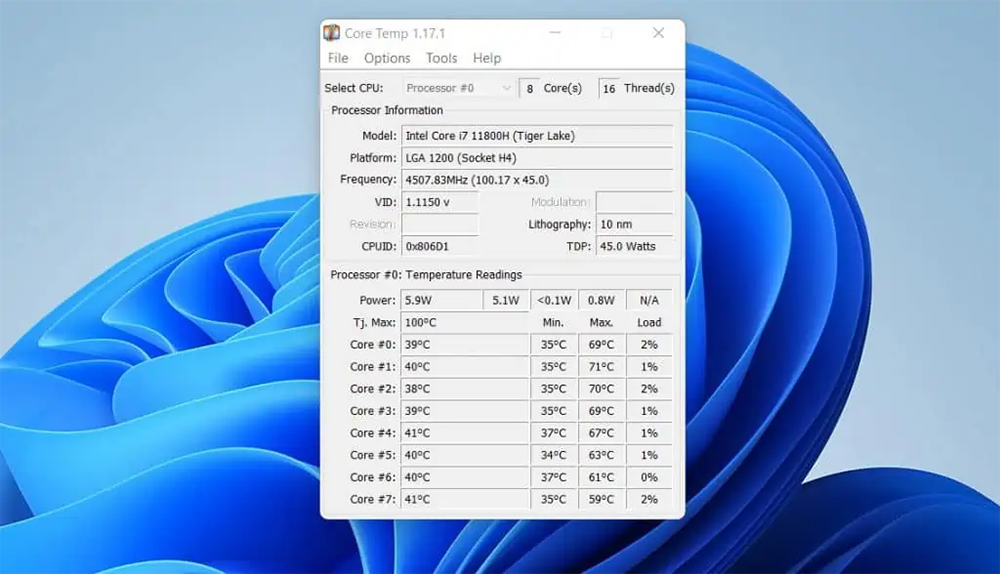
Introduction:
Monitoring your PC’s CPU temperature is a crucial aspect of maintaining optimal performance and preventing potential hardware issues. Overheating can lead to system instability, performance degradation, and, in severe cases, hardware damage. This comprehensive guide explores various methods and tools to check your PC’s CPU temperature, offering insights into the importance of monitoring thermals and steps to ensure your system runs at peak efficiency.
Section 1: Understanding the Significance of CPU Temperature Monitoring
1.1 Impact on Performance:
- CPU temperature directly affects performance. Excessive heat can lead to thermal throttling, where the CPU reduces its clock speed to prevent overheating. Monitoring temperatures helps ensure your CPU operates at its intended performance levels.
1.2 Preventing Hardware Damage:
- Prolonged exposure to high temperatures can damage CPU components. Regularly checking CPU temperatures allows users to identify potential cooling issues and take preventive measures before irreversible damage occurs.
1.3 Enhancing System Stability:
- Consistent monitoring helps maintain system stability. Overheating can cause crashes, system freezes, and unexpected shutdowns. By keeping temperatures in check, users can ensure a stable computing experience.
Section 2: Checking CPU Temperature in BIOS/UEFI
2.1 Accessing BIOS/UEFI:
- Restart your computer and access the BIOS/UEFI during the boot process. The key to enter BIOS/UEFI varies (common keys include Del, F2, F10, or Esc), so consult your motherboard’s manual or look for on-screen prompts.
2.2 Navigating to Hardware Monitoring:
- Within the BIOS/UEFI, navigate to the hardware monitoring section. Look for an option related to CPU temperature, often labeled as “Hardware Monitor,” “PC Health,” or similar.
2.3 Reading CPU Temperatures:
- The BIOS/UEFI will display real-time CPU temperatures. Note the values and observe whether they fall within the acceptable temperature range for your CPU model.
Section 3: Using Third-Party Software for Temperature Monitoring
3.1 Core Temp:
- Core Temp is a popular third-party tool that provides real-time CPU temperature readings. Download and install Core Temp, and it will display individual core temperatures, package temperature, and other relevant information.
3.2 HWMonitor:
- HWMonitor offers a comprehensive overview of system temperatures, including CPU, GPU, and motherboard readings. Download and install HWMonitor to get detailed temperature insights along with fan speeds and voltages.
3.3 Open Hardware Monitor:
- Open Hardware Monitor is an open-source tool that provides real-time monitoring of various system components, including CPU temperatures. Download and install Open Hardware Monitor for a detailed overview of your system’s thermal performance.
Section 4: GPU Temperature Monitoring
4.1 Using GPU-Z:
- While primarily focused on GPUs, GPU-Z is a valuable tool for monitoring GPU temperatures. Download and install GPU-Z to keep tabs on your graphics card’s thermal performance, complementing CPU temperature monitoring.
4.2 MSI Afterburner:
- If you have a dedicated graphics card from MSI, MSI Afterburner is a powerful tool that not only allows you to overclock your GPU but also provides detailed temperature monitoring and customization options.
Section 5: Ensuring Accuracy and Calibration
5.1 Checking CPU Specifications:
- Refer to your CPU’s specifications provided by the manufacturer. Different CPUs have varying temperature tolerances, and understanding these values helps interpret temperature readings accurately.
5.2 Understanding Idle and Load Temperatures:
- Differentiate between idle and load temperatures. Idle temperatures represent the CPU’s temperature during low usage, while load temperatures reflect its performance under heavy workload. Both values contribute to a comprehensive understanding of thermal performance.
5.3 Calibrating Thermal Sensors:
- Some third-party tools allow users to calibrate thermal sensors. Follow the software’s instructions to ensure accurate readings, especially if you suspect sensor inaccuracies.
Section 6: Taking Preventive Measures
6.1 Ensuring Proper Cooling:
- Adequate cooling is essential for maintaining optimal temperatures. Ensure that your PC is equipped with proper cooling solutions, including fans, heat sinks, and in some cases, liquid cooling systems.
6.2 Cleaning Dust and Debris:
- Dust and debris accumulation can impede airflow, leading to increased temperatures. Regularly clean the inside of your PC, paying special attention to fans and heat sinks, to prevent thermal issues.
6.3 Optimizing Airflow:
- Proper case airflow contributes to efficient cooling. Arrange fans strategically to ensure a balanced airflow, promoting the effective dissipation of heat.
Section 7: Understanding Temperature Alerts
7.1 Configuring Alerts:
- Some monitoring tools allow users to set temperature alerts. Configure these alerts to notify you when temperatures exceed predefined thresholds, enabling proactive measures to prevent overheating.
7.2 Responding to High Temperatures:
- If you receive temperature alerts or notice unusually high readings, investigate the cause. Check for software processes, background tasks, or cooling system malfunctions that might contribute to elevated temperatures.
Conclusion:
Monitoring your PC’s CPU temperature is an integral part of maintaining system health and performance. By understanding the significance of temperature monitoring, utilizing the appropriate tools, and taking preventive measures, users can ensure their CPUs operate within safe temperature ranges. Whether checking temperatures in the BIOS/UEFI, using third-party software, or complementing CPU monitoring with GPU insights, the comprehensive guide provided here empowers users to navigate the complexities of thermal management. Welcome to a world where your awareness of CPU temperatures contributes to a stable, efficient, and long-lasting computing experience.